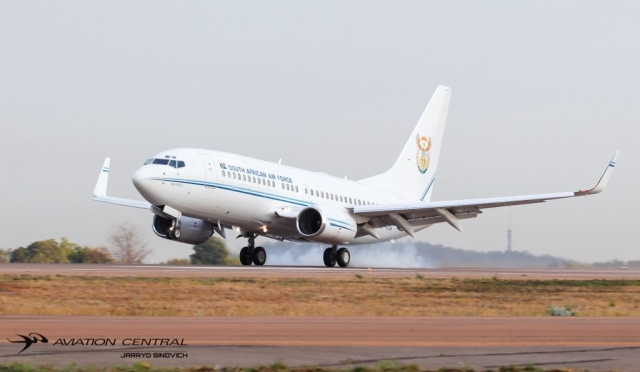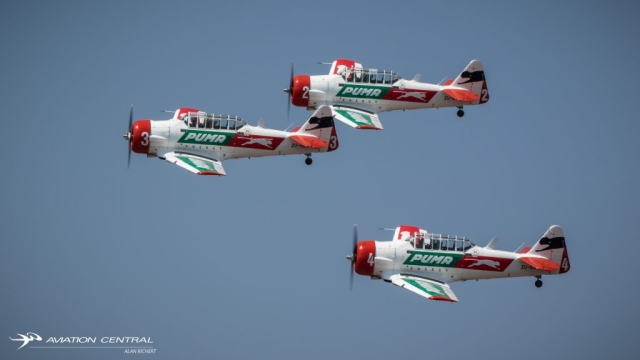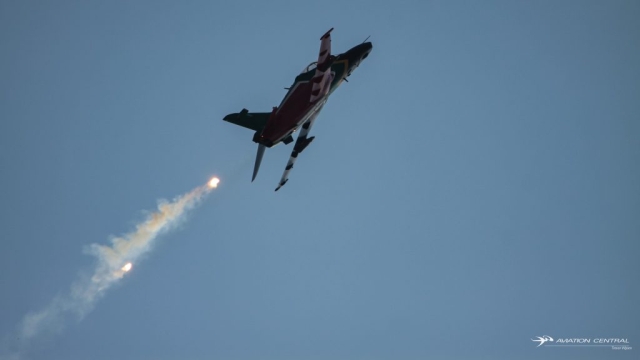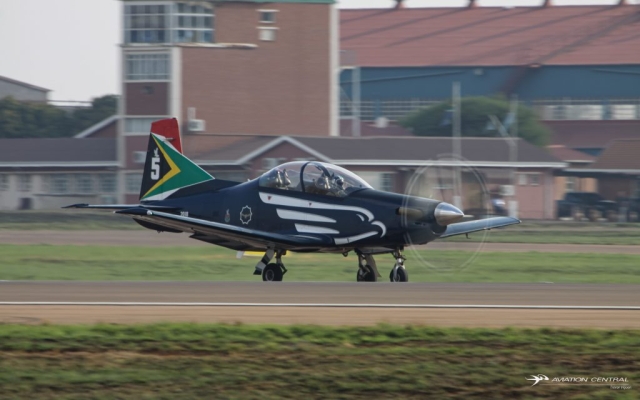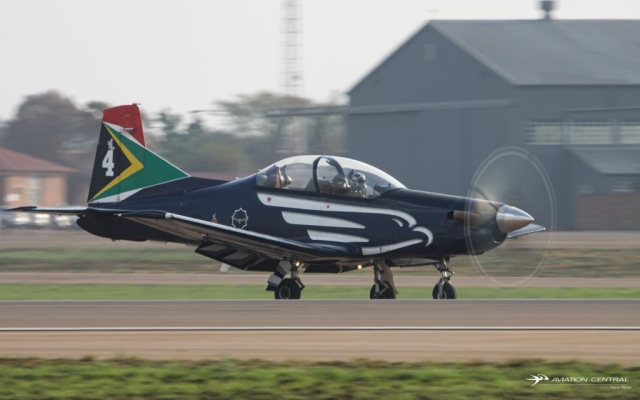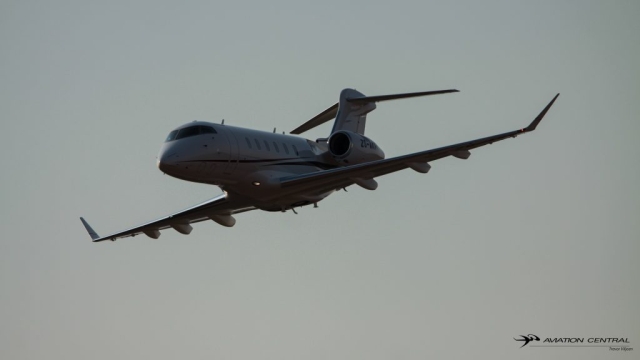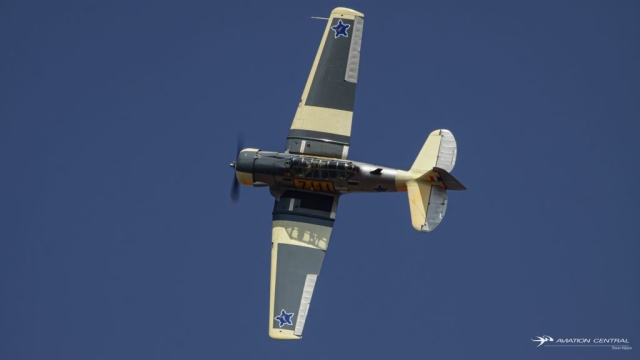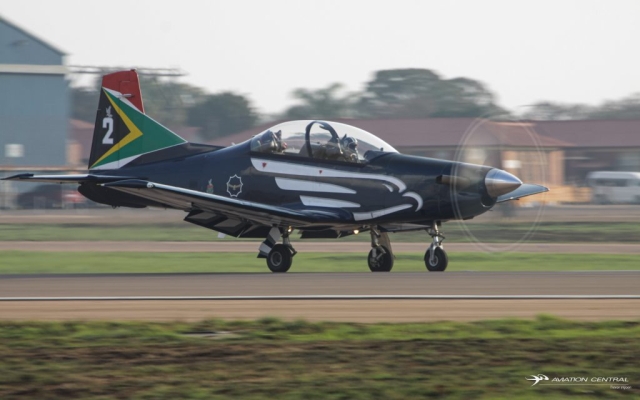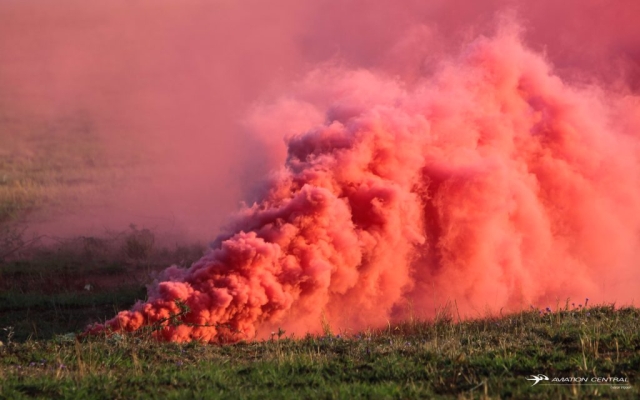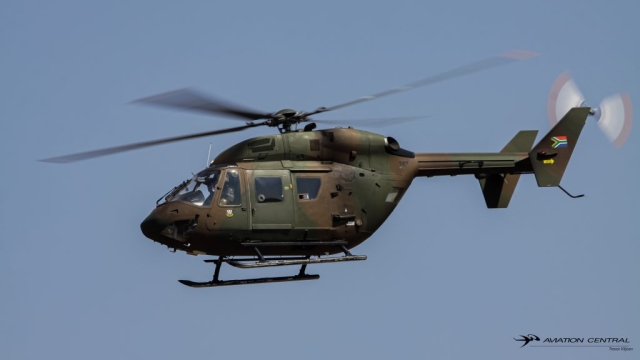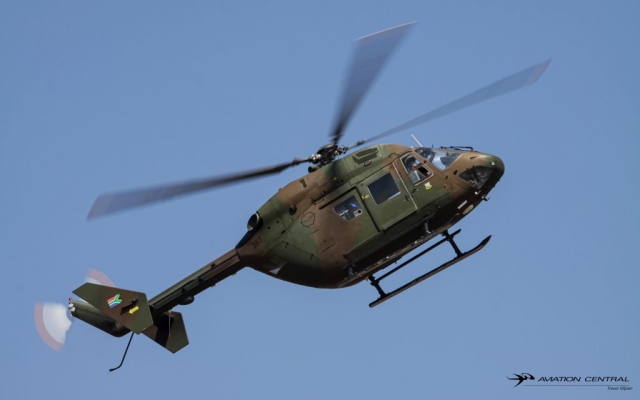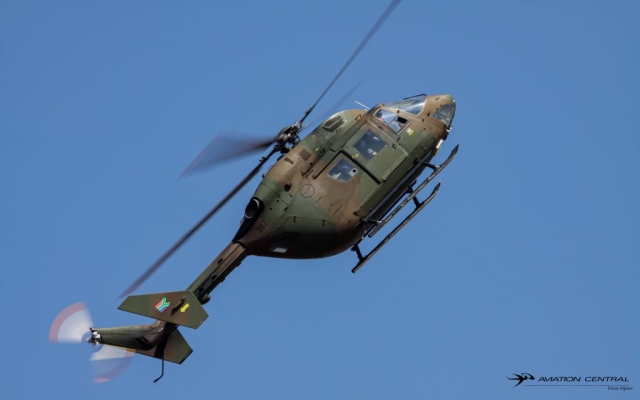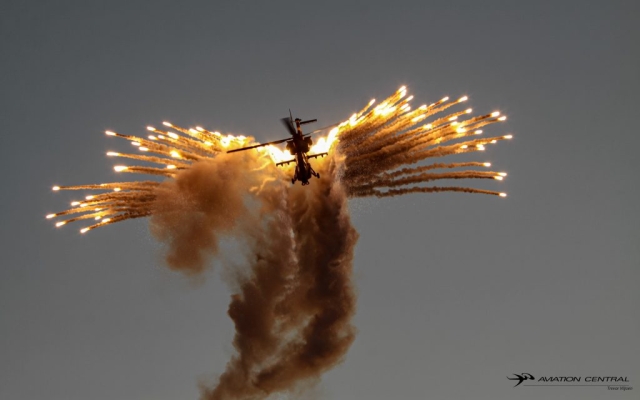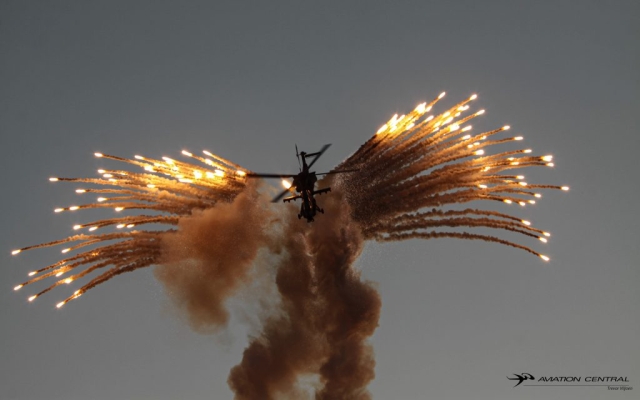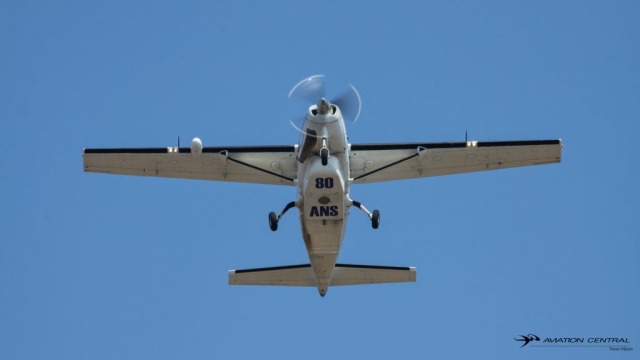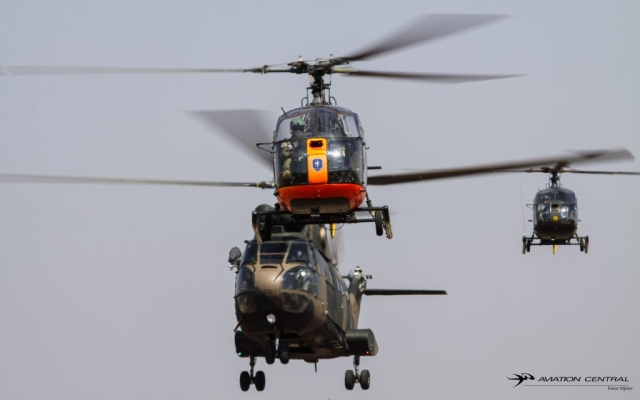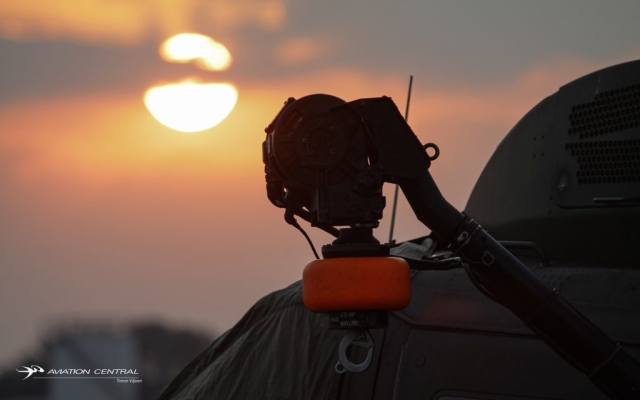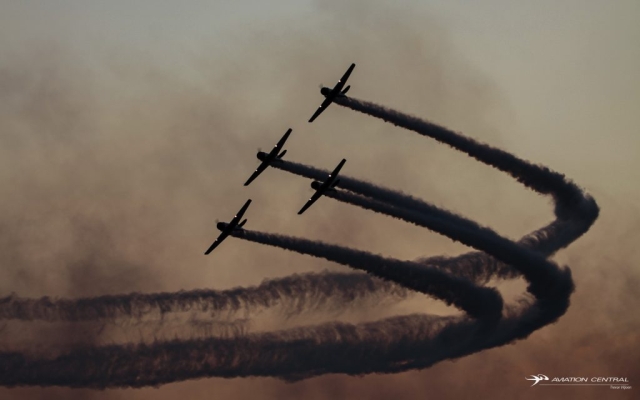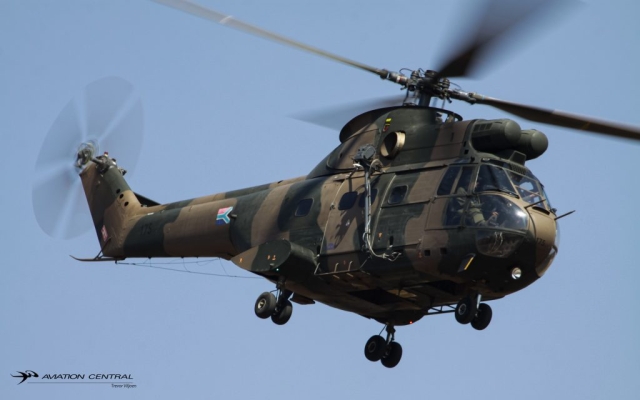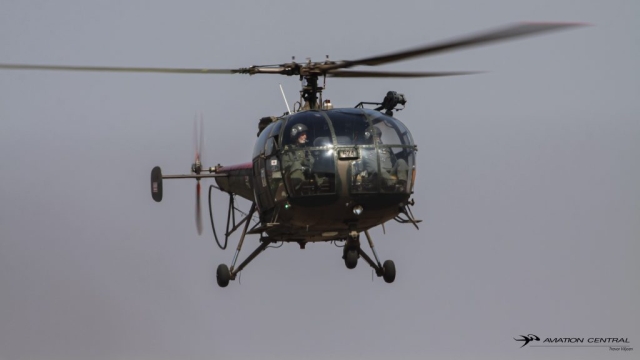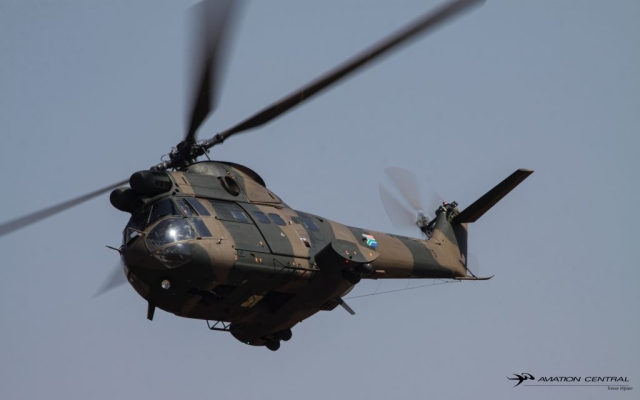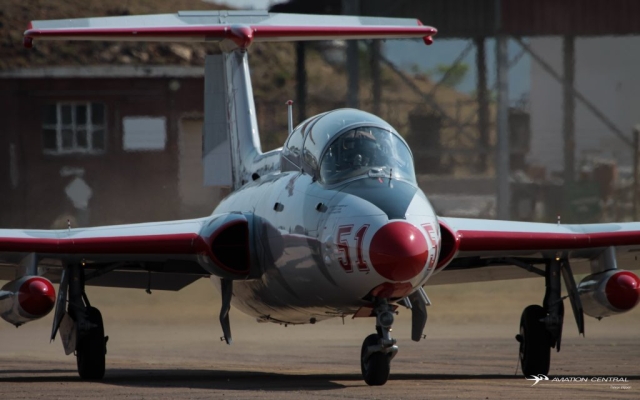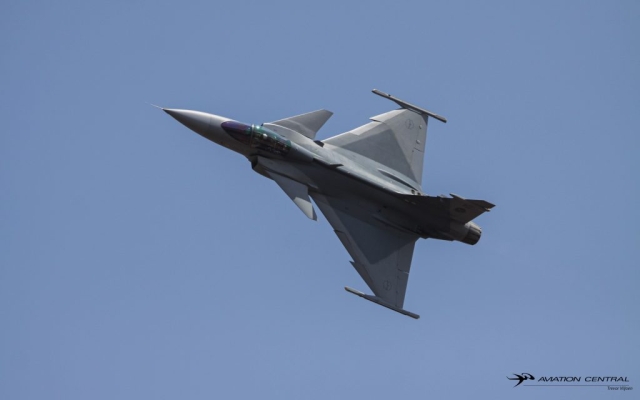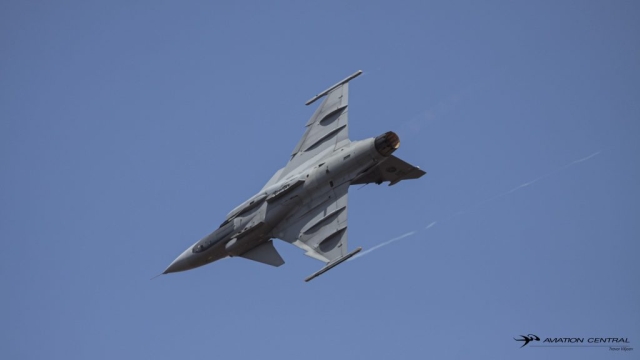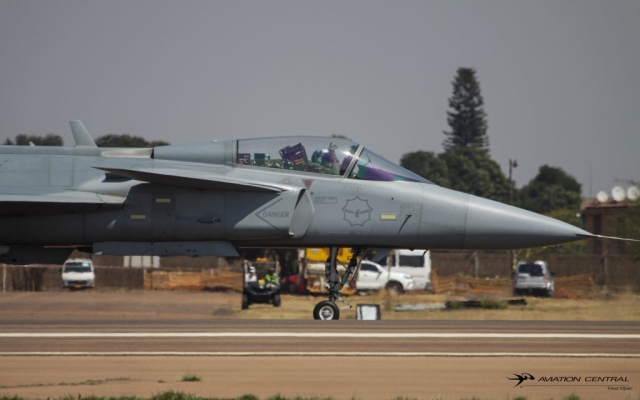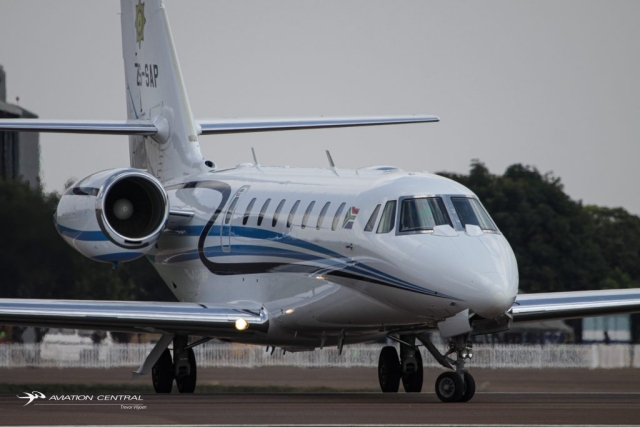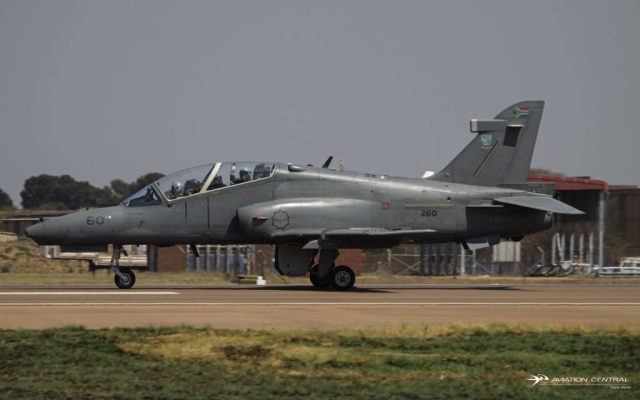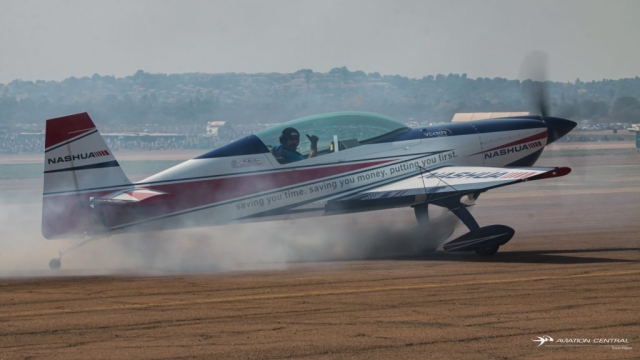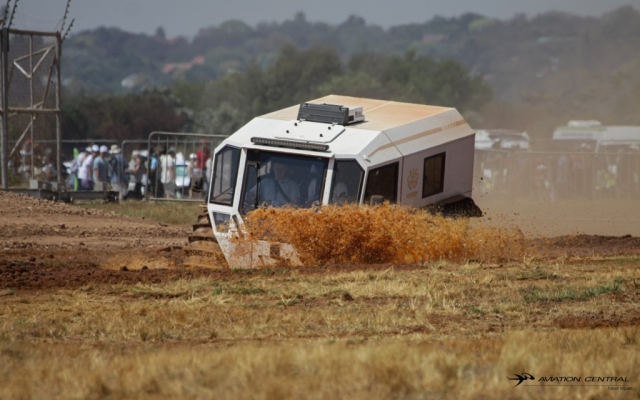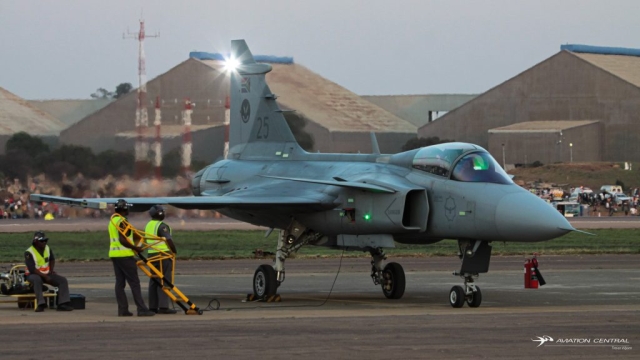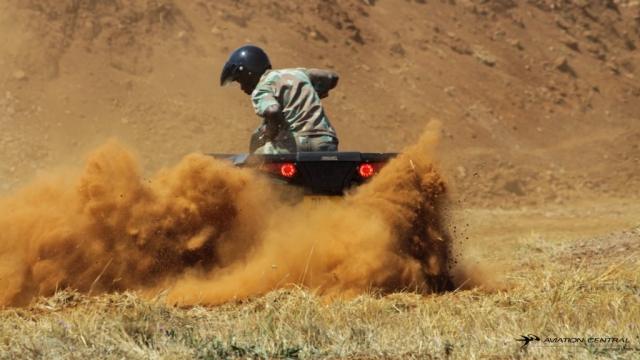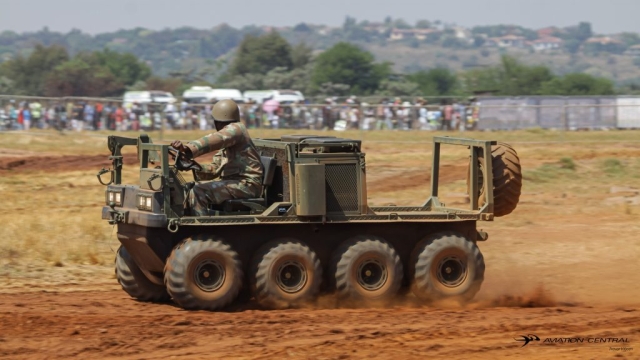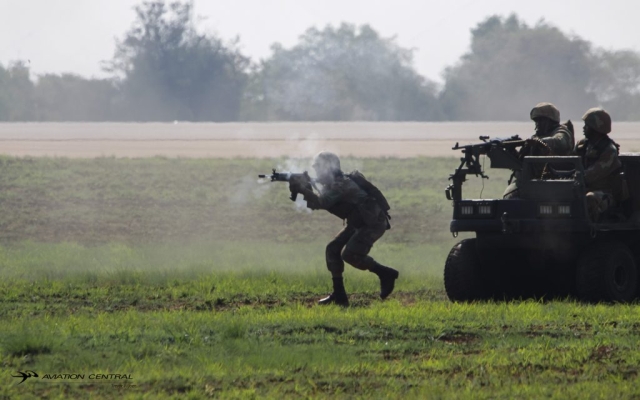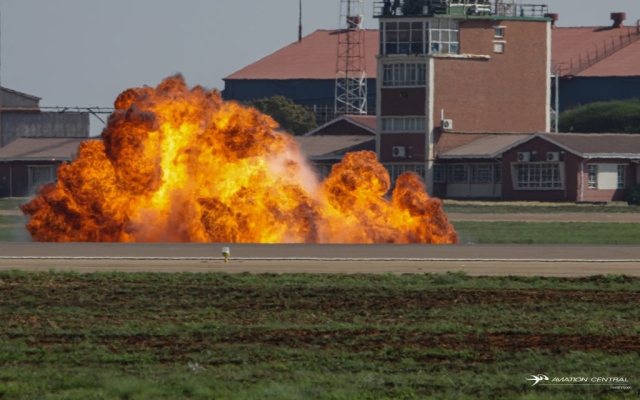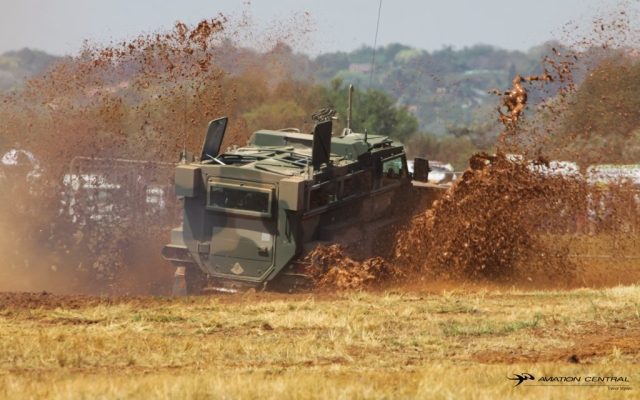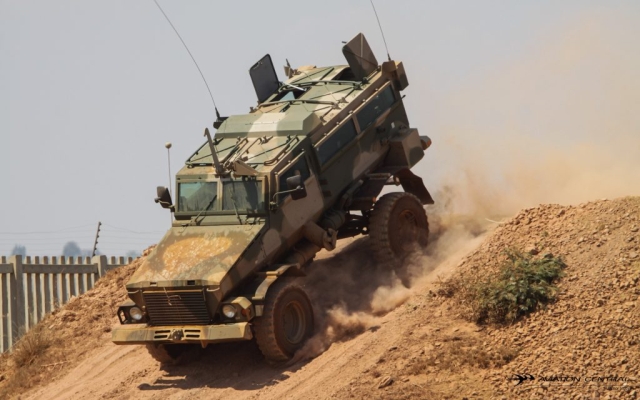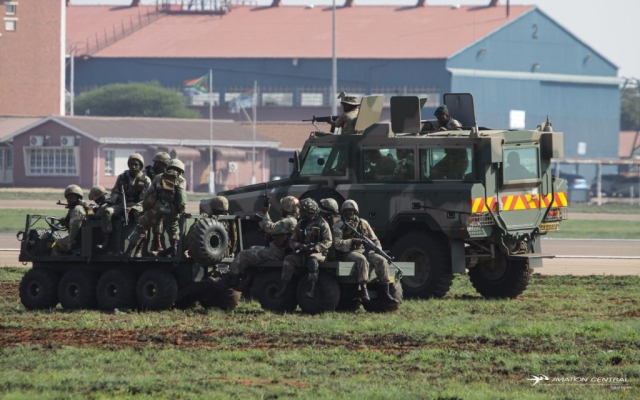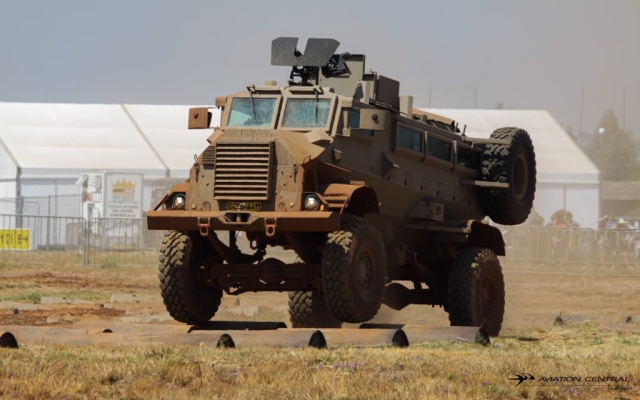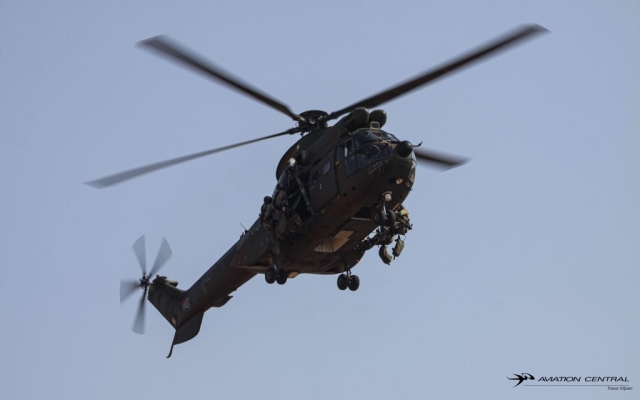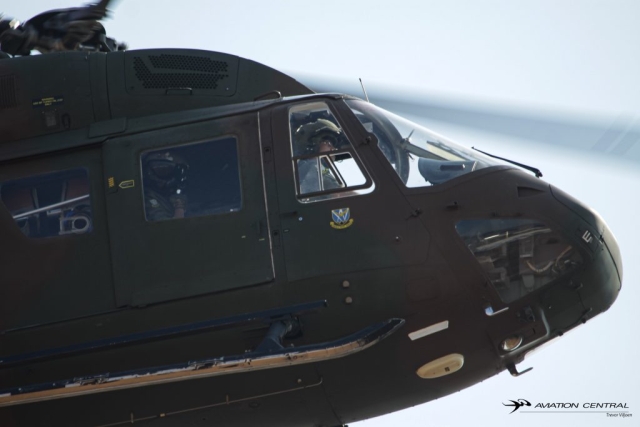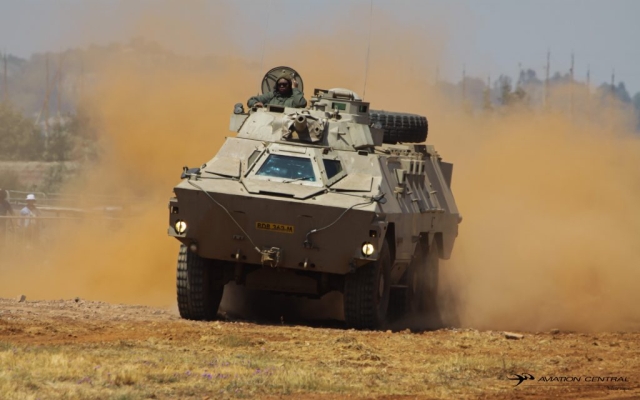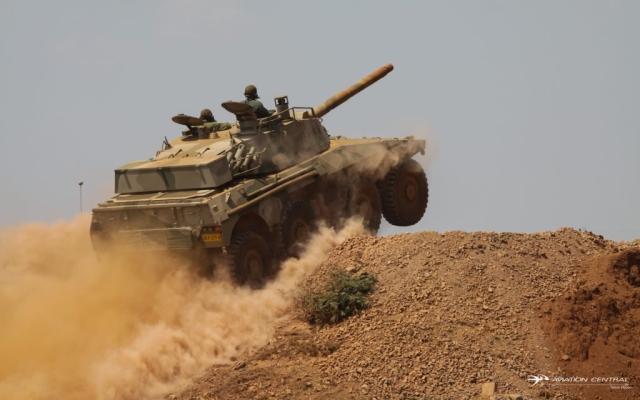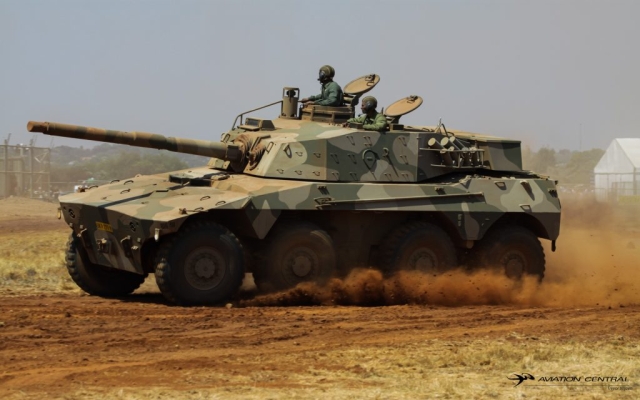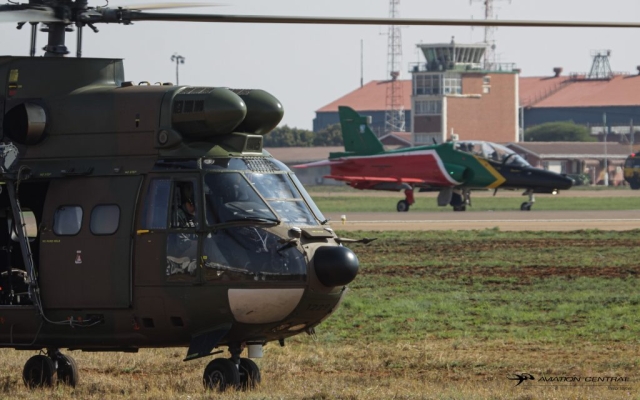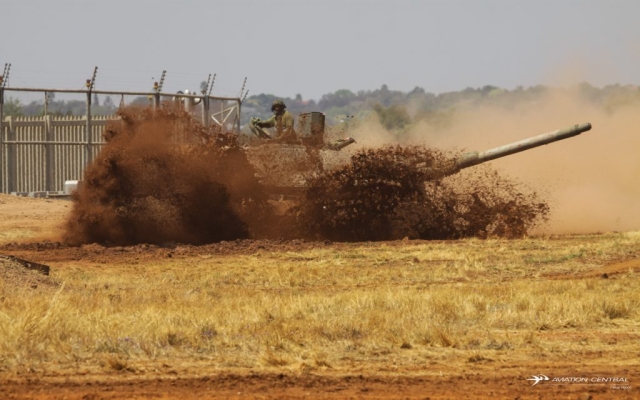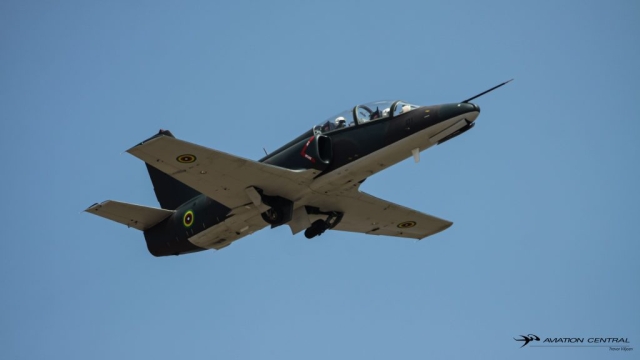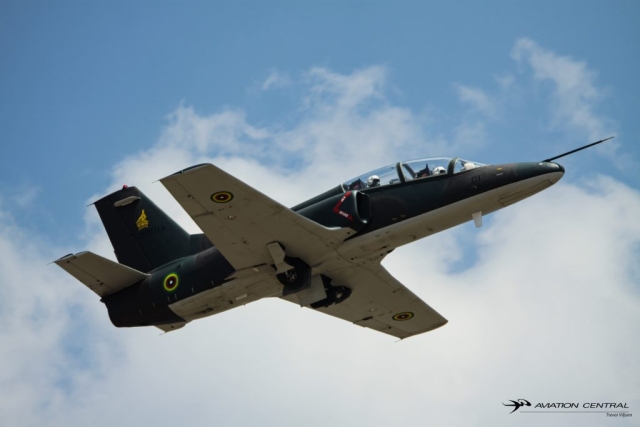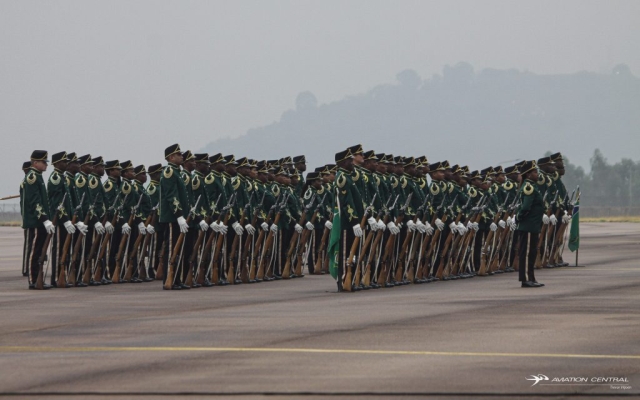Tag Archives: Canon South Africa
Africa Aerospace and Defence 2022
The Africa Aerospace and Defence Exhibition Trade show and Airshow made a welcome return to Air Force Base Waterkloof in the City of Tshwane from 21-25 September 2022. The show hosted three trade days and two airshow days where the public could witness Africa’s biggest airshow.
With the obvious pandemic that we should all be aware of. Africa Aerospace and Defence was not allowed to take place during 2020, as it also formed part of the South African Airforce centenary year.

The first trade show was opened by the minister of defence Thandi Modise. She mentioned
“This eleventh edition of AAD will bring together the largest gathering of aerospace and defence industry decision makers and buyers from around the world, including many from Africa.”
“The defence industry plays a key role in assisting the SANDF to discharge its
constitutional mandate of defending the sovereignty and territorial integrity of
South Africa and to secure our nation. By ensuring security and stability, the
SANDF, in turn, helps to create an enabling environment for economic growth
and development. “
” Through our peacekeeping missions, we are similarly contributing to peace, stability, and prosperity on our continent.”
Before we move on the show, the show would not have happened without the Department of Defence, stakeholders and sponsors, the AAD team, and especially the Airboss Colonel Keith Fryer, Colonel Keith Andrews, and Colonel Keith Wilkinson, Airforce Base Waterkloof for putting such a great show together with your team of ramp controllers, ATCs, pilots and ground crew.

As most of the hangar space was used up by local and foreign exhibitors. The apron had a number of static aircraft from both the South African Air Force and the United States Airforce and Civilian aircraft both fixed wing and helicopters.
Capital Sounds and Brian Emmenis proved a kilometer and more of the audio cable to provide commentary to this year’s AAD.
The sound of Mr airshow brings back all the memories of big airshows at Waterkloof during our youth.
The airshow featured a cavalcade of emergency vehicles that were lucky not needed during the duration of the two airshow days.
Hangar 51 provided a flying display from their Aero L29 Delphin flown by Grant Timms, this was Grant’s first L29 display on the highveld. The L39 Albatross was also displayed as part of the civilian jet contingent by Pierre Gouws.


Andrew Blackwood-Murray flew a solo aerobatic display in his Nashua Extra 300L.

Pierre Gouws also flew the first FlySafair Boeing 737-800 display together with SAFAIRs outgoing Lockheed L100-30.
The Raptor RVs were also led by Pierre Gouws as there provided tight formation aerobatics in form of the kit-built aircraft.



The South African Airforce provided a number of assets to this year’s Africa Aerospace and Defence. 2 Squadron had three Gripens with a flying display by Colonel Musa “Midnite” Mbhokota. Six Hawks, a solo display by Major Rehan “Kaine” Venter.


The Silver Falcons Aerobatic Team with a four-ship route with team 84 flying their first display led by new team leader Major Lucky Malloks. A solo display from Central Flying School Langebaanweg by Falcon 5 Major Diaan Grobbelaar. Major Grobbelaar used to be the Agusta A109LUH display pilot before moving on to Central Flying School to become an instructor.



41 Squadron with the “Pointer formation” consisting of four Cesena C208A Caravans flew a diamond formation before breaking off for singleton flypasts during their show.

A skydive drop made up of members from the Pretoria Military Skydiving club and other units in the SANDF used a 44 Squadron Casa 212 “8011” as their jumpship for their skydive drop.

From the rotary assets, we had 15 Squadron Charlie Flight BK117 display flown by Major Corrie Oberholzer with flight engineer Sargent VD van Dalen, together with Major Paul “Raccoon” Kempthorn in the 16 Squadron Rooivalk.



The highlight of any AAD airshow is the mini-war, in which you get to see a number of helicopters, Transport aircraft, Jets, and armored vehicles.

Three Oryx Helicopters, Two Agusta A109s, Two BK117s, One Rooivalk from various helicopter squadrons from across South Africa, Casa 212-300, C130BZ, and four Hawk MK120 made up of the aerial assets in that slot of the program.



The South African Police Airwing also put on a threat-type scenario of a hijacked Cessna Sovereign that got escorted by two 85 Combat Flying School Hawk MK120s. Once on the ground SAPS task force and bomb squad members were brought in by SAPS Airwing Airbus H125 and 15 Squadron BK117s helicopters.



The United States Airforce brought two Boeing C17 Globemasters, a KC46 Pegasus Tanker, HC130 Combat King Hercules, and an HH-60 Pavehawk Helicopter. The HC130 and Pavehawk provided a flying display of aerial refueling.



The Airforce of Zimbabwe was present with a Casa 212 and two K8s. The K8 display was flown by display pilots wing commander Lizwe Mahlangu and squadron leader Norman Taurai Marodza.

The South African Airforce Museum flew most of its flying exhibits, two Alouette IIs, two Alouette IIIs, Aerospatiale Puma, and two Cessna C185s, and a solo display included. Solo Aerobatics from Harvard “Nelson” 7111 display by Martin “Marlow” Louw. A Kudu was also a jump ship for a few Pretoria Military Skydive members.



Juba Joubert flew an Alouette II display and Andre van Zyl flew the Magni Gyrocopter display. Henley Air also displayed two of their Bell 222s.



Menno Parsons was welcomed back at AAD with the only flying type of its kind on African soil the P51D “Mustang Sally”.

High-energy aerobatics were performed by the Iveco Extra 330s flown by Nigel Hopkins and Jason Beamish. The two also flew in the Goodyear Eagles Pitts Specials team joined by Johan von Solms and Trevor Warner.


Ivan and Jeandre van der Schaar performed their first display at AAD with the Classic radial Boeing Stearman and RC Extra aircraft duo or better known as the father and son duo.


Excujet provided a display of their Challenger business jet that was seen flying on Saturday and a brief appearance of a Learjet 45 on Friday’s validations.

The Hired Gun Pitts specials also flew their four Pitts specials on the afternoon slot of the show on Saturday.
Flare drops were probably the highlight for any camera user from 28 Squadron on their Lockheed C130BZ, 85 Combat Flying School Hawk MK120, and 16 Squadron Rooivalk during the later part of the program of the show on both days.



The Puma Flying Lions Harvards led by Scully Levin performed a sunset show on both Saturday and Sunday bringing a fittingly spectacular end to AAD 2022.

Well done to everyone involved. We were proud to be the official media partner during the duration of the trade and Airshow and build up to the event
We look forward to the ninth edition of AAD in 2024. Join the #AAD2024 event page by clicking on the banner below!

Please Browse Through Our Pictures Below
AAD2018 Day 2
AAD2018 Day 2

Thursday day two of AAD2018,saw a bigger influx of trade visitors then day one of the event,the media were kept busy with a number of briefings and different subjects to photograph and report on.Much of the morning,we spent going through each of the halls and seeing the different defence industry’s showing off their products to the world.



A visit to the western side of the base,we had the opportunity to capture pilots and ground crew as they made their way to aircraft for the validation flights for the weekends Airshow.Most impressive capture today was six Gripens on the apron. A sight you don’t see to often at South African Airshows.The rest of the validations were spot on and some great pictures and airmanship was seen!



Rostec suggests using automobile leasing scheme to renew Russian helicopter fleet
The Russian fleet of civilian helicopters numbers about 1,800 helicopters, over 60–70% of which have been operated for 25 years and longer. Most of those helicopters were put into operation as early as at the beginning of the post-soviet period, and a considerable part of the aircraft was purchased by air carriers in early 1990s. According to the aircraft register, the Russian fleet mostly consists of Mi-8 helicopters. Due to the long-standing need to replace a part of the Russian helicopter fleet, Rostec suggests measures that would facilitate purchase of new aircraft for air carriers.
“We are expecting that renewal of the helicopter fleet will be supported by the state program to facilitate purchase of new aircraft for air carriers, similar to the one implemented in the auto industry,” said Director of the Aviation Cluster of Rostec Anatoly Serdyukov. “A take-back program can be developed, and a leasing scheme may be used. For instance, an old helicopter will be taken in as the first payment, and an air carrier will receive a new helicopter in return.”






Canon AAD2018 to Aviation Photography
We joined the Canon team at the Royal Elephant Hotel & Conference Centre near AFB Swartkop, Pretoria. This workshop included the way of Aviation Photography with Justin de Reuck, South Africa’s top Aviation Photographer. The workshop was well attended and we as a team learnt so much and can improve our skills to Aviation Photography. Thanks to Canon and Abri Kriegler
Stay tuned to our Facebook page for updates on the final trade day tomorrow!
Airshow photography, the Canon way
Airshow photography, the Canon way.
Written by Abri Kriegler – aviation photographer and Canon nut.
Airshow photography in South Africa is alive and well as can be seen from the number of cameras following aircraft through the sky at any Airshow.

(AAD 2012, AFB Waterkloof, Photo by: Marius Nel)
More and more amateur photographers are lining the fences to get that one special image of their favourite aircraft or display team. Unfortunately, most of these photographers struggle to get the shot they want and this could be attributed to factors such as: understanding the basic fundamentals of photography, understanding their photographic gear or understanding the settings needed to get that special image.
Although this article leans towards the Canon systems, things such as the basics of photography, basic camera usage and basic settings applies to all systems.
Please click on Advertisement below to help keep us going!
Photography basics
This section could easily span several pages with a lot of information forced onto the aspiring photographer. Most photographic courses start off with an hour or two on this subject. Here we will try and cover it in a few simple steps.
To understand photography, you must understand the fact that any photograph is made up out of light. Light controls and shapes the image or photograph, and how we control the light’s interaction with our cameras, through various settings, ultimately determines the result that we achieve.
Exposure, or image capture is controlled by three settings: shutter speed, aperture and ISO.

Shutter speed controls the time that the sensor of the camera is exposed to light. This is measured in a time value and controlled in the TV setting of your Canon camera.
Aperture controls how much light the lens allows through to fall on the sensor of the camera and is controlled in the AV setting of your Canon camera. The largest aperture value is limited by your lens and is written on your lens. E.g. Canon EF100-400mm f/4.5-5.6L IS USM has a maximum aperture of f/4.5 at 100mm and f/5.6 at 400mm.
The ISO setting is the sensitivity of your camera’s sensor to light. In a bright situation you can use a lower ISO value (ISO 100) than in a darker situation (ISO 1600).
Each of the three controllers does have a bit of baggage, or issues, associated with it.
Shutter speed: The slower the shutter speed, the more you can become prone to camera shake, or the dreaded out-of-focus “arty” images. On the other hand, a slower shutter speed would add a sense of movement to your images, either through panning or through propeller blur in older aircraft or helicopters. My rule is that an image of such an aircraft should always have the most amount of blur possible such as the image for the Harvard below right.


(AFB Zwartkop, Photo by: Abri Kriegler, Tv 1/125) (AFB Zwartkop, Photo by: Abri Kriegler, Tv 1/80)
Aperture: This might get a little confusing, but the smaller the number associated with aperture, the bigger the opening of the lens. Aperture value is expressed as f/2, or f/2.8. Understand that the “f” stands for focal length and using the “/” in a mathematical equation will give us the lens opening associated with that value. For example: f/2 on a 50mm lens – 50/2=25. 25mm is the diameter of the physical opening of the lens through which light passes, or known as the entrance pupil. The issue with a bigger f value such as f/2.8, is that your depth of field, or objects in focus in front, or behind your focus point.
ISO: When shooting in bright sunlight, or in situations where there is enough illumination, the ISO value can be rather low such as ISO 400. To get fast shutter speeds, or use a smaller aperture in darker situations, you will have to increase the ISO value. Increasing it to too high a value will result in “noise” appearing in your image.
This chart helps in explaining this a little more.

(Chart created by: Hamburger Fotospots – these are not linked in any way, it just shows the effects of the aperture, shutter speed and ISO)
It is interesting to note that you can use different combinations of these setting to achieve the same result. This is very good for you if you are limited by your equipment. A good example of this is if your lens does not go to and aperture value of f/2.8 but can only go as low as f/4.

Another factor that influences the exposure or image is the metering mode at the time that the image was taken. Metering is how your camera determines what the correct shutter speed and aperture should be, depending on the amount of light that goes into the camera and the ISO. Back in the old days of photography, cameras were not equipped with a light “meter”, which is a sensor that measures the amount and intensity of light. Photographers had to use hand-held light meters to determine the optimal exposure. Obviously, because the work was shot on film, they could not preview or see the results immediately, which is why they religiously relied on those light meters.
Today every camera has an integrated light meter that automatically measures the reflected light and determines the optimal exposure. There are three common metering modes: Evaluative metering, Centre-weighted metering and Spot metering.
Evaluative metering analyses readings from multiple areas in the image.

Centre-weighted metering takes an average of the scene with a bias towards the centre of the scene.

Spot metering covers a smaller area (2-3% of the scene) and allows the photographer to dictate where the key point of exposure is. I use this mode for most of the images I would take at an Airshow because I like to expose for the aircraft in the shot.

Basic camera use and settings
Once again, I must stress that these controls and settings are based on the Canon system. Other systems will have slightly different naming for their controls, however the outcome will still be the same.
Shooting modes:
Shooting modes for the camera are controlled by the main dial and allows the photographer to select the shooting mode. There are several shooting modes ranging from Automatic, where the camera makes all the decisions for you, to more creative models such as Program (P), Aperture value (Av), Time value (Tv) and Manual (M).
Automatic mode (the green square): Aperture and shutter values are automatically set to prevent camera shake, Auto ISO.
Program mode (P): This is a step up from fully automatic. The camera detects which lens is used and sets the shutter speed and aperture.
Aperture value mode (Av): This mode is used when more control over aperture is needed. The photographer sets the aperture and the camera sets the shutter speed. I use this mode when shooting fast moving aircraft such as jets where I do not have to show movement.

(EAA Airventure Oshkosh 2015, Photo by: Abri Kriegler, Mode: Av, f/8)
Time value mode (Tv): This mode is used when more control over shutter speed is needed. The photographer sets the shutter speed and the camera sets the aperture. This is the mode to use when shooting aircraft with propellers or rotors in the case of helicopters.

(Adrenaline Airlink Airshow 2017, Photo by: Abri Kriegler, Mode: Tv, 1/10)
Manual mode (M): All setting for shutter speed and aperture are controlled by the photographer.
Autofocus:
When photographing at an Airshow your camera should always be on a continuous focus mode, unless you are shooting static images on the flight line. Set your camera to AI SERVO mode and continuous shooting.
I use back-button autofocus on all my camera bodies and would suggest this to anybody whose camera allows this. Unfortunately, this is very camera dependant and setting this up changes from model to model. I suggest you have a look in your camera manual if you want to set this up.
Posture:
The correct posture when taking photos are also very important as this will help combat camera shake. Keep your elbows together, against your chest. Keep your left hand under the lens, rather than on the side. Lean slightly into camera, holding it tight against the forehead. Keep your legs open. Same for shooting portrait, no excuses. Keep in mind that if you have a zoom lens, your left hand will also be adjusting your focal length. Your right hand should now automatically fit on the side of the camera. Teach yourself the button layout of your camera, so that you can do minor adjustments whilst keeping your eye to the viewfinder.
Panning:
The more you practice the better you will most definitely get. Use every opportunity to practice your panning, from children and dogs running in the garden to vehicles driving past your property. Remember to keep your stance as solid as possible while following the movement of your subject by turning from the hips.

(EAA Airventure Oshkosh 2015, Photo by: Abri Kriegler, Mode: Tv, SS 1/125, Instagram 1:1 crop)
The gear
Canon of course.
On a serious note, as we know, your budget determines your gear. I have seen photographers shooting with the most basic camera and lens combinations getting the most amazing photos at Airshows. Do not put yourself down because you cannot afford the latest and greatest. Make do with what you have, learn to use your gear to its full potential and when you can upgrade, make sure to get the most bang for your buck.
Camera bodies:
Although it is possible, I would not suggest using a Digital Compact Camera, a camera where the lens is permanently attached, to use as an Airshow camera. Look at an interchangeable lens camera that fits your budget. The more expensive bodies will have better frames per second speed, focussing systems, memory buffers and durability to name a few.
Lenses:
There is a very good reason why I only own Canon lenses. I believe that the Canon lenses works best with the Canon system and offers the best results. Having said that, once again you have to look at it from a budget point of view.
You will need a long zoom lens to capture that aerial display and something shorter to capture some static images of the people and maybe some aircraft on the flight line.
I find that a minimum of 300mm focal length is sufficient for most South African Airshows.
Accessories:
I do not take a tripod or monopod to Airshows as I find them cumbersome and restrictive. Always take at least two batteries, it helps to have them charged before the show!
Take a cleaning cloth to clean the dust and sweat from your camera gear.
Invest in the best memory cards that you can buy. The cheaper cards are cheap for a reason.
Do’s and Don’t
Do – Enjoy yourself. Take as many photos as you can, that special moment only happens once. Walk around, don’t stand on one spot and get the same photos as everybody else. Smile and wave at the pilots walking or taxing past, they do notice and it makes for a great photo when they wave back. Help other photographers that you see struggling, you were there once as well. Go up to the pro photographers and ask them for tips. Most of the time they are more than happy to help.
Do not – Go where you are not allowed. Safety officers will ask you to leave the Airshow. Get in the way of another photographer, be aware of your surroundings.
Remember to have fun!

































































































































































































































